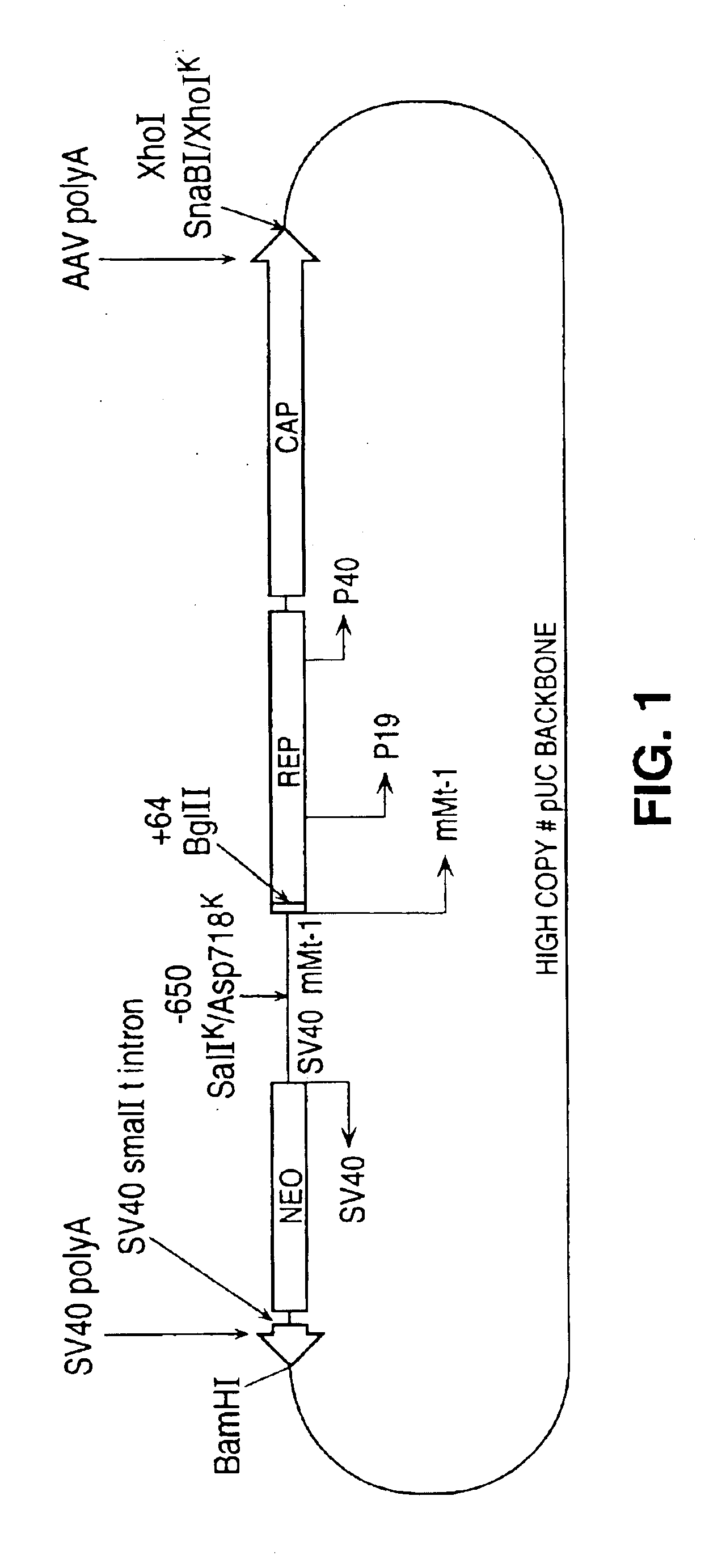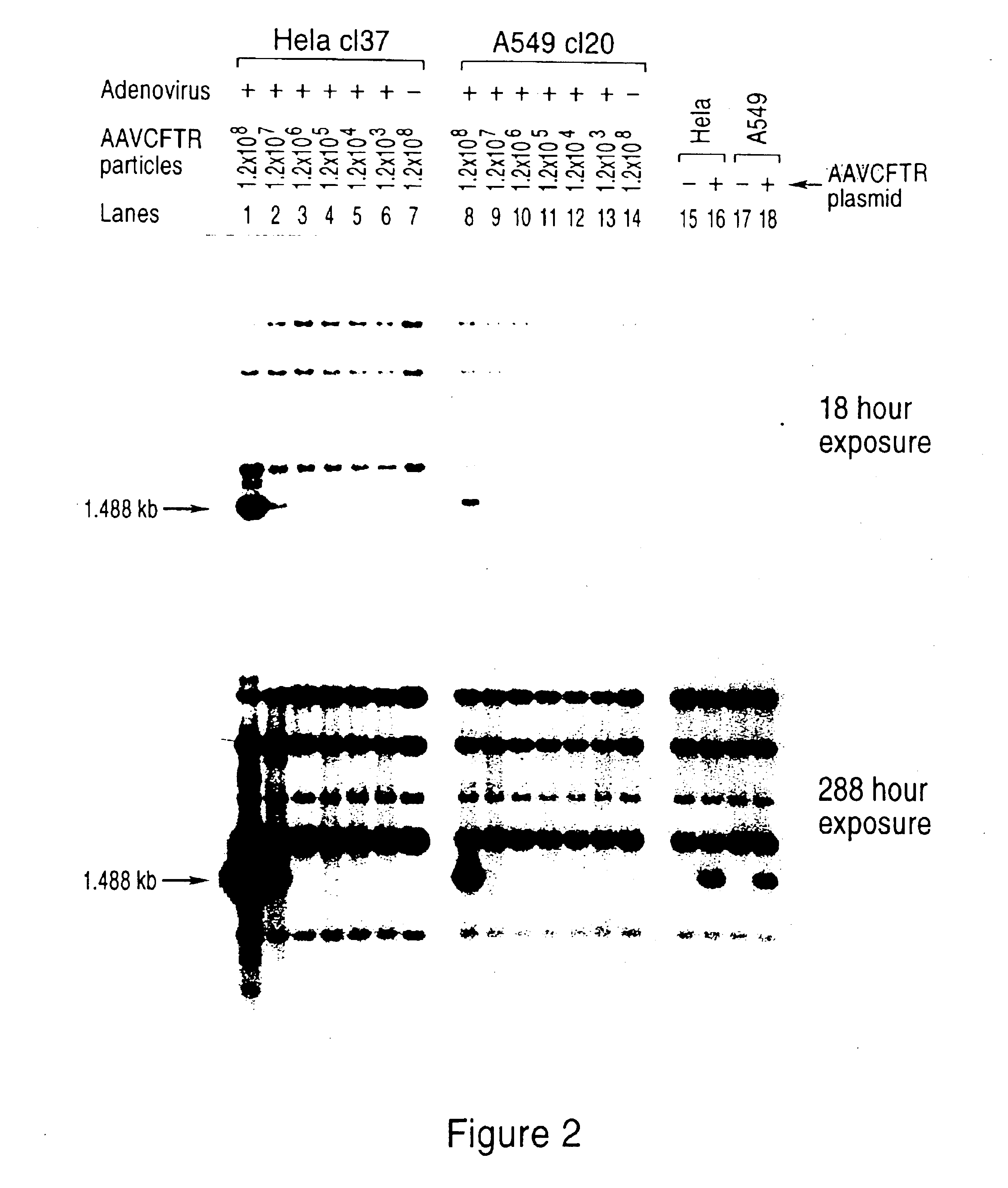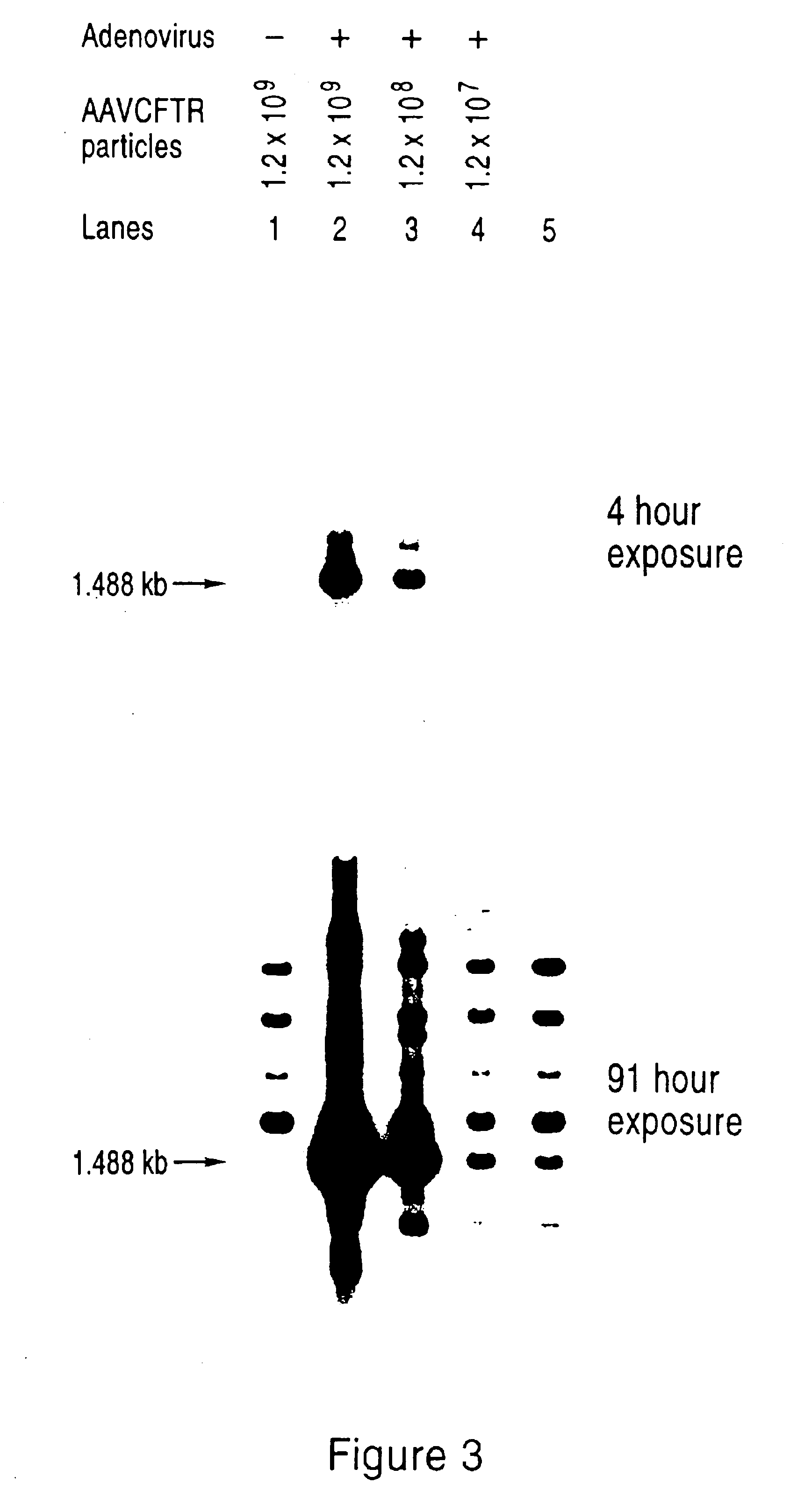Packaging cell lines for generation of high titers of recombinant AAV vectors
a technology of aav packaging and vectors, applied in the field of gene therapy, can solve the problems of affecting the host cell, unable to easily manipulate the development strategy of cell and tissue transduction strategies, and unable to achieve helper-free aav packaging cell lines, etc., and achieves the effects of affecting the host cell, unable to easily manipulate, and high multiplicity of vectors
- Summary
- Abstract
- Description
- Claims
- Application Information
AI Technical Summary
Benefits of technology
Problems solved by technology
Method used
Image
Examples
example 1
Construction of a Plasmid Encoding the Rep-Cap Sequences Operably Linked to a Heterologous Promoter
[0111]As a first illustration, we constructed a plasmid containing the wild type rep and cap genes (from deoxyribonucleotide 311 to 4493 of the AAV genome); operably linked to the mouse metallothionein I (mMt-I) gene promoter (from −650 to +64 relative to the start of transcription; as described by Srivastava et al. 1983. J. Virol. 45:555-564; and Hamer and Walling (1992) J. Mol. Appl. Genet. 1:273-288).
[0112]This construction effectively removes both ITR's and substitutes the mMt-I promoter for the p5 promoter while maintaining all of the AAV reading frames, the p19 and p40 promoters and the polyadenylation signal. Also included within this vector is pKOneo, which contains the neo gene (providing resistance to neomycin and gentamicin) under control of the SV40 early promoter; as well as SV40 small t intron and SV40 polyadenylation signal oriented in the opposite transcriptional direct...
example 2
Integration of the Rep-Cap Genes into Mammalian Cell Lines
[0115]We introduced plasmid pMt-rep / cap / / pKO-neo into exemplary mammalian cell lines in order to examine expression of the rep and cap genes after integration into the host cell genome.
[0116]Human Hela and A549 [American Type Culture Collection (ATCC®)] cells were grown in Dulbecco's modified Eagle's medium (DMEM) supplemented with antibiotics and 10% fetal bovine serum. All DNA transfections were carried out by electroporation of 15—30 μg pMT-rep / cap / / pKO-neo plasmid into 4 ×106 cells in 800 μl serum-free medium in a 0.4 cm cuvette at 250 volts / 960 μF using a Gene Pulser (Bio-Rad).
[0117]After electroporation, the cells were plated at low density in the presence of 1 mg / ml active component geneticin (Gibco-BRL). Individual colonies were ring cloned, expanded and maintained in 1 mg / ml geneticin.
[0118]In prior studies, the expression of rep protein in mammalian cells has been correlated with reductions in plating efficiencies a...
example 3
Detection of Rep Protein by Indirect Immunofluorescence
[0126]We examined rep protein expression in the transfected cell lines (exemplary clones derived from Hela or A549 cells) using indirect immunofluorescence (IF).
[0127]Transfected and control cells were seeded (at 1.6×104 cells / chamber) onto Lab-Tek 8 well chamber slides (Nunc Inc., Ill.) in 200 μl culture medium and incubated overnight. The cells were then treated individually or in combination with wild type AAV (MOI=5), adenovirus (MOI=10) and ZnSO4 (100 μM) for ˜30 hours. After removing the culture medium, the cells were washed three times with phosphate buffered saline (PBS) at 0° C. and fixed for 1-2 min. with acetone. The cells were then washed three additional times with PBS and incubated overnight with “WT” medium (1% nonfat dry milk, 0.5 mg / ml bovine serum albumin, 150 mM NaCl, 50 mM HEPES (pH 7.5), 0.1% Tween 20 and 1 mM NaN3).
[0128]Anti-rep antibody (rabbit anti-Rep78.93; Trempe et al. 1987 Virology 161:18-28) was dil...
PUM
 Login to View More
Login to View More Abstract
Description
Claims
Application Information
 Login to View More
Login to View More - R&D
- Intellectual Property
- Life Sciences
- Materials
- Tech Scout
- Unparalleled Data Quality
- Higher Quality Content
- 60% Fewer Hallucinations
Browse by: Latest US Patents, China's latest patents, Technical Efficacy Thesaurus, Application Domain, Technology Topic, Popular Technical Reports.
© 2025 PatSnap. All rights reserved.Legal|Privacy policy|Modern Slavery Act Transparency Statement|Sitemap|About US| Contact US: help@patsnap.com



